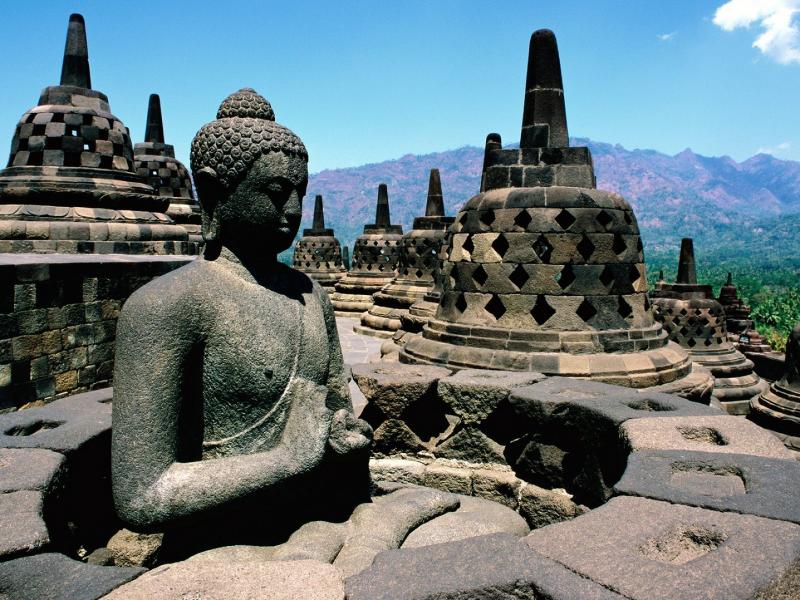
A Buddhist Nation
by Sean Mahon
Even though Indonesia is the world’s most populace Muslim-majority country, it has a long history with Buddhism. It is one of the main six religions that the Indonesian government recognises, which also include; Islam, Protestantism, Hinduism, Roman Catholicism, Buddhism and Confucianism. Buddhism arrived in Indonesia in the 6th century, and, after Hinduism, it is the country’s second oldest religion. It is thought to have been brought to the country when trading between India and Indonesia began.
Many powerful Buddhist dynasties have risen and fallen in the country during the religions long history, including the Sailendra dynasty that emerged in Java during the 8th century, and the Medang or Mataram Kingdom, a Hindu-Buddhist Kingdom which existed between the years 752-1006. These dynasties are the source of the various Buddhist monuments, temples and historical sites that are spread throughout Indonesia.
Borobudur is a Mahayana Buddhist temple that was built in the 9th century during the reign of the Sailendra dynasty. It is a shrine to Lord Buddha and is a place for Buddhist pilgrimage. A journey is designed into the temple for its pilgrims, who should follow the path that ascends the monument. The path takes the pilgrims through the monuments three levels, which are symbolic of Buddhist Cosmology. The levels are Kāmadhātu, the world of desire, Rupadhatu, the world of forms, and Arupadhatu, the world of formlessness. Pilgrims also pass through an extensive system of hallways and staircases, the walls of which are decorated with 1,460 narrative panels. The temple became a designated World Heritage Site in 1991, and it is currently the most visited tourist attraction in Java and all of Indonesia; it is visited by many people who do not follow Buddhism.
Also located in Central Java is Sewu an 8th century Buddhist temple that is the second largest in the area after Borobudur. It was built at the end of Rakai Panangkaran’s reign during the Mataram Kingdom, and upon the Kewu or Prambanan plains. It is close to the Candi Prambananm, a 9th century Hindu temple. The proximity of the two temples suggests that the Hindus and Buddhists lived together peacefully in the area surrounding the temples. The two religions both dominated within the Indonesia until Islam reached the country’s islands in the 13th century. By the 16th century it had almost completely replaced the two religions within Java and Sumatra, as it continue to spread and gain prominence on the other Islands. Buddhism and Hinduism are longer equal within the Indonesian Archipelago as Hinduism made up 1.69% of the population in the 2010 census, over double the country’s percentage of Buddhists.
The remaining Buddhist followers in Indonesia are mostly Chinese Indonesians, and 53.82% of the Chinese Indonesian population were found to be Buddhists in 2000. Other Buddhist-majority cultures can be found in indigenous groups within Indonesia. The religion has mostly become just another part of the country’s long history, the remaining Buddhists are dedicated, but most of the Buddhist representation within the Indonesia comes in the form of its ancient temples and monuments.
Share this article:


















